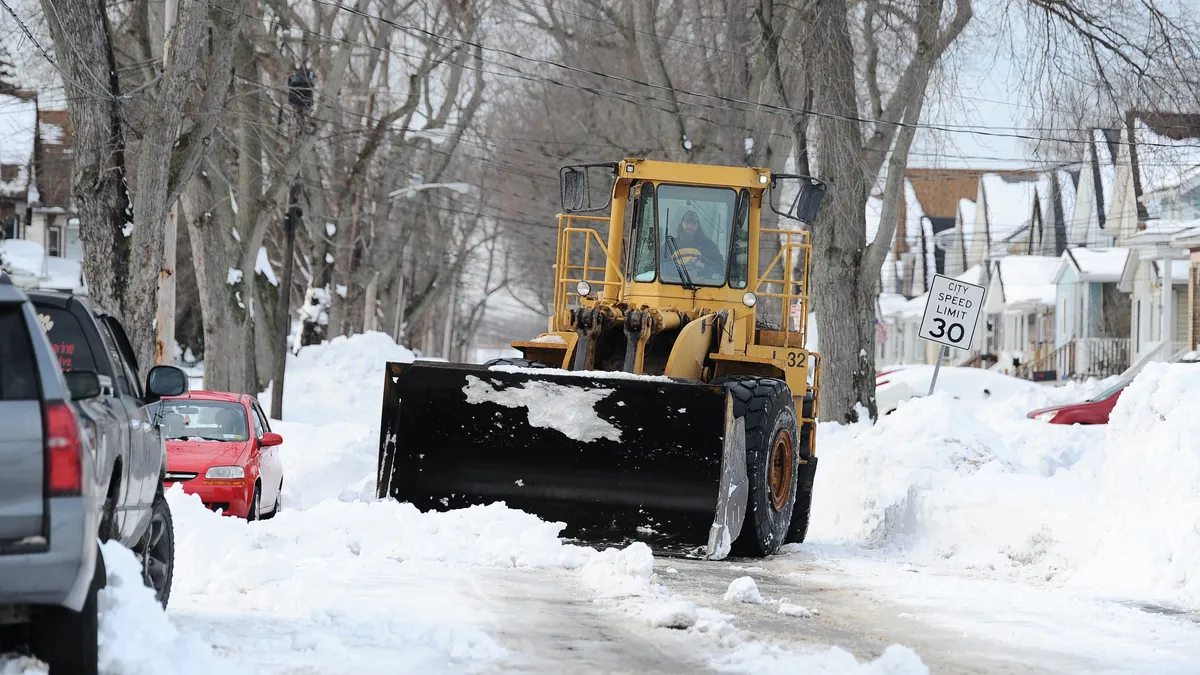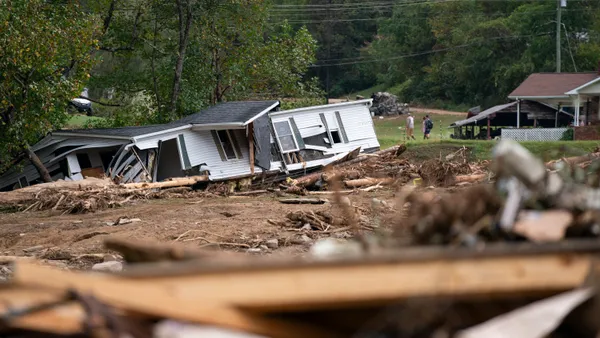Dive Brief:
- The city of Buffalo, New York, could take a slew of steps to better prepare for major blizzards such as the deadly storm that pummeled the area in December, finds a New York University report commissioned by Buffalo Mayor Byron Brown and published last week.
- The report revealed that the storm disproportionately resulted in the deaths of people of color, and the city did not have enough emergency vehicles, storage and warming centers. Also, many people were uninformed of travel bans and stay-at-home orders, with the city relying heavily on TV and radio announcements and not enough residents enrolled in text message alert systems.
- The “most crucial priorities for the [city] to undertake as soon as possible” include funding and constructing a new public works facility, planning warming shelters, increasing enrollment in the city’s emergency alert system, developing a plan for large snow events that make transportation unavailable and planning to upgrade certain aging housing stock to keep residents warm, the report says.
Dive Insight:
The blizzard in Buffalo was a “generational storm,” with the last similar one occurring in 1977, the report says. But that doesn’t mean another one can’t happen again in the near future — even as soon as this winter, said Sarah Kaufman, the report’s principal author and interim executive director of the NYU Rudin Center for Transportation.
How much a city needs to prepare for less common but potentially disastrous events is the “existential question of emergency preparedness,” she said. “In terms of planning, what the city can do is have as much as possible in place for a normal or greater than normal storm season, and then have resources identified for when a massive scaling up needs to happen.”
It’s crucial that cities “remain nimble” in the face of unexpectedly severe weather, Kaufman said. One way of doing that, she added, is by empowering first responders to know which resources are available to them and use them creatively. For example, Buffalo police wore wetsuits during last year’s blizzard because they were more insulating than police uniforms. “That's obviously not something that would have appeared in an emergency plan, right?” she said. “It’s just the ingenuity of the team.”
The report also recommends the city of Buffalo:
- Establish a “battle rhythm,” through which information is communicated regularly to the public so that people know when to expect city communication and how to access it.
- Expand the city’s social media presence to counter misinformation, and use plain language to describe how residents should act. For example, “Do not go outside to shovel or run errands; weather is deadly.”
- Partner with private sector entities, similarly to how Florida cities collaborated with Uber and Lyft to provide residents free and discounted round trips to shelters before Hurricane Ian.
- Expand the transit system, since buses can more easily navigate snowy streets than typical passenger vehicles. “Abandoned cars, stranded motorists, and blocked roadways were all symptoms of Buffalonians’ reliance on cars,” the report says.
- Provide boxes of emergency supplies and food to those who need it in the days before a storm. Those most in need can be reached through block associations, mutual aid groups, food pantries and social service providers.
The report doesn’t confine its recommendations to Buffalo — it also suggests that the Federal Emergency Management Agency reconsiders how it determines funding eligibility for power generators and improves location-based push notifications released to mobile phones. The Federal Communications Commission has also proposed improvements to these notifications, which are currently limited to only text, 360 characters and two languages.
At the state level, New York should increase Buffalo’s involvement in decisionmaking by the Niagara Frontier Transportation Authority, which oversees public transportation in the area. “Limiting the city’s access to decision-making at NFTA hinders coordination between the city and its transit operator,” the report says.











